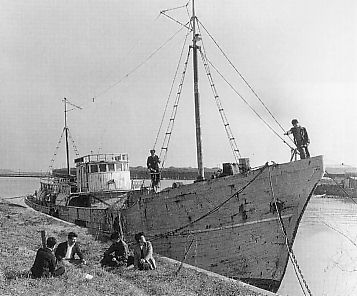Most could tell you the significance of Hiroshima and Nagasaki: the first usage of nuclear weapons in warfare. But many would be surprised to learn that the US continued to drop nuclear bombs on islands of the Pacific, long after World War II was finished. Students in the Japanese Environmental History class taught by Dr. Elyssa Faison at University of Oklahoma collaborated to enhance Wikipedia’s coverage of one such incident. In 1954, twenty-three Japanese sailors set out to catch tuna. While their ship, the Daigo Fukuryū Maru (the Lucky Dragon No. 5) was near the Marshall Islands, the sky started glowing in the west, and ash fell like snow from the sky. Unbeknownst to the sailors, and despite being outside of the US-declared “danger zone”, the fishermen had just been exposed to the radioactive fallout of a nuclear test, one that was more than twice as powerful as it had been intended. The sailors immediately fell ill with radiation poisoning; one would later die from the exposure while the other twenty-two men were hospitalized for over a year. One sailor Oishi Matashichi, had a stillborn child and later developed liver cancer, both of which he attributed to his radiation poisoning. The ship itself remained highly radioactive at first, with radiation detectable from one hundred feet away.

Students made substantial revisions to Daigo Fukuryū Maru, adding detail about the health effects to the surviving fishermen and the response of the US government, which was initially denying culpability and claiming that the fishermen were actually spies. The US eventually paid Japan more than 15 million dollars in reparations. The fate of the Daigo Fukuryū Maru was also added: initially purchased by the Japanese government, by 1970 the Lucky Dragon No. 5 was sitting in a garbage-filled canal. It was then pulled from the water and put on public display in Tokyo as a symbol of opposition to nuclear weapons. Students even created a brand new biography of survivor Oishi Matashichi, who went on to become an author advocating for nuclear disarmament, attending a 2015 memorial service on the Marshall Islands for the victims of the nuclear testing at Bikini Atoll.
By writing this information into Wikipedia, the students have shared the story of the Lucky Dragon No. 5 with a global audience, helping thousands to understand the far-reaching ripples of nuclear testing in the Pacific.
Interested in incorporating a Wikipedia writing assignment into a future course? Visit teach.wikiedu.org for all you need to know to get started.
